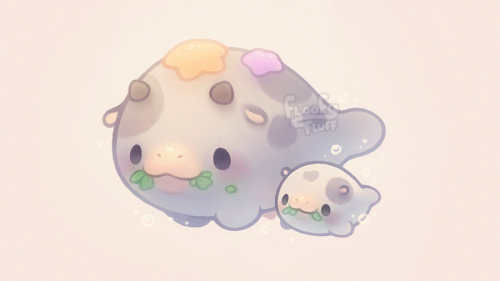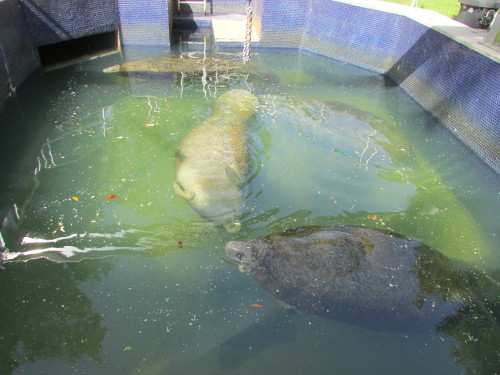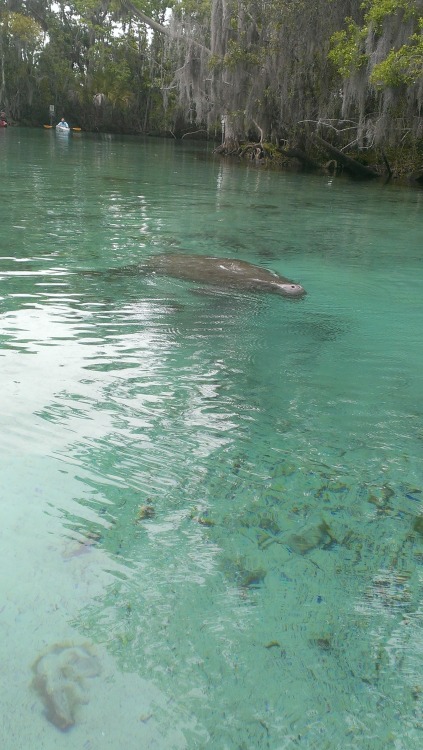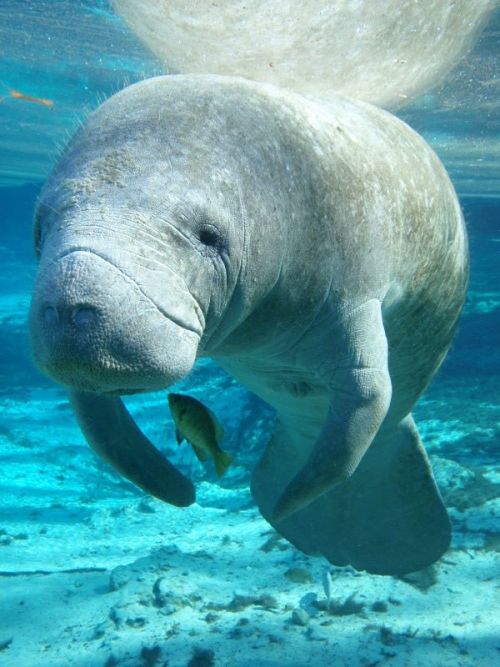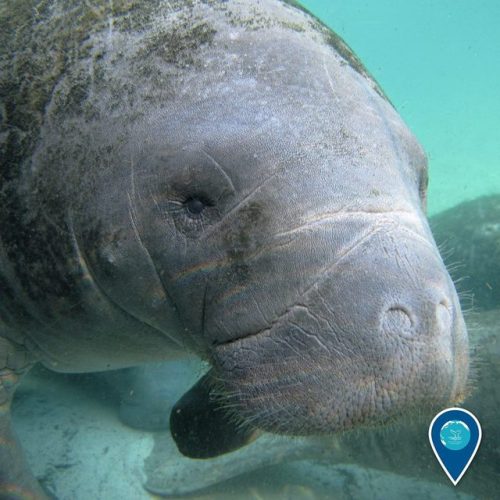#sea cow
A few days ago, the U.S. Fish and Wildlife Service (FWS) proposed to downgrade the manatee from an ‘endangered’ to ‘threatened’ status under the Endangered Species Act (ESA). Indeed, the West Indian manatees populations have been steadily increasing, and the agency has stated that the species should no longer be considered endangered.
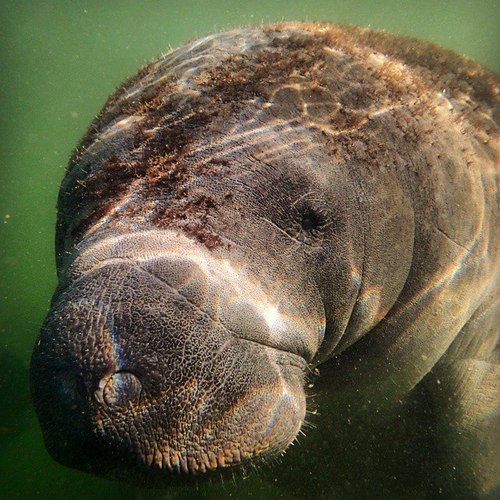
(Photo by David Roche)
Endangered listing means that a species is “currently in danger of extinction throughout all or a significant portion of its range”, while a threatened listing states that the species “is likely to become endangered within the foreseeable future.”
This marine mammal was originally listed under the ESA about 50 years ago, as the manatee population was on the brink of extinction due to overhunting and collisions with boats. During the first aerial surveys in the 1990s, officials counted close to 1,300 manatees in Florida. Nowadays, officials have counted over 6,300 in Florida alone, and scientists estimate that 13,000 manatees live in their natural range of the Caribbean and the northern coasts of Colombia, Venezuela and Brazil.
The manatees will remain protected under the Marine Mammal Protection Act,which makes it illegal to harass, feed, hunt, capture, collect, or kill any marine mammal or part of a marine mammal, and which improves the response rate to strandings or mortality events.
I think this is very encouraging to see that the efforts triggered by the ESA listing have worked, and could work for many other species. I have also read that the agency has guaranteed this would not dismantle slow-speed zones or lessen other protections for the species. This change only reflects the improvements in the population numbers in recent years.

(Photo by me or one of my coworkers)
Manatee conservation groups are, however, not thrilled about this proposed downgrading in the ESA listing, and call this decision a misguided and premature one. Dr. Katie Tripp, director of science and conservation for the Maitland, Florida-based Save the Manatee Club, has warned that declassification may potentially lead to undoing all of the good that protection efforts have achieved so far. Tripp also argues that many other threats the manatees population face have not been reduced enough to guarantee the welfare of manatee populations, such as pollution and increased human interaction.
For now, this proposed re-listing is open for public comments until April 7th.
Dugongs are Pacific manatees. You can tell the difference between a manatee and a dugong because dugong’s have fluked tails. Also “manatee” sounds more like a thing to me. “Dugong” is one of those words that never stops looking like a typo. They have prehensile upper lips on their stupid fat faces that they just drag along the seafloor all the damn time so they can suck up like a hundred pounds worth of plants every single day. They’re like underwater vaccuum cleaners. Unlike manatees, dugongs are saltwater mammals, which really doesn’t seem safe to me. It’s like seeing a baby with a fork. It’s like, yeah, I get it, I get that forks are not intrinsically dangerous, but are you sure that this baby is ready to handle that responsibility? Mother Nature, are you absolutely positive that dugongs can handle open ocean? They’re not…they’re not gonna get caught in a current or anything?
Post link
During winter, manatees migrate to NOAA Florida Keys National Marine Sanctuary in search of warm, shallow waters to escape winter’s chill.
Because manatees tend to hang near the shoreline, munching pounds of seagrass, boat strikes have long been a threat to manatee population. By keeping our eyes out, motors up, and boat speeds low, we can all do our part to help protect these lovable creatures.
(via:NOAA Office of National Marine Sanctuaries)
Photographs: USFWS and Bob Bonde/USGS
It’s Manatee Appreciation Day! These gentle giants can grow to over 14 feet in length and weigh in at over 3,000 pounds. Also, known as “sea cows,” manatees feed on seagrasses and other aquatic plants. Today, the total population is estimated to be at least 13,000 manatees, with more than 6,500 in the southeastern United States and Puerto Rico. When aerial surveys began in 1991, there were only an estimated 1,267 manatees in Florida.
Post link

